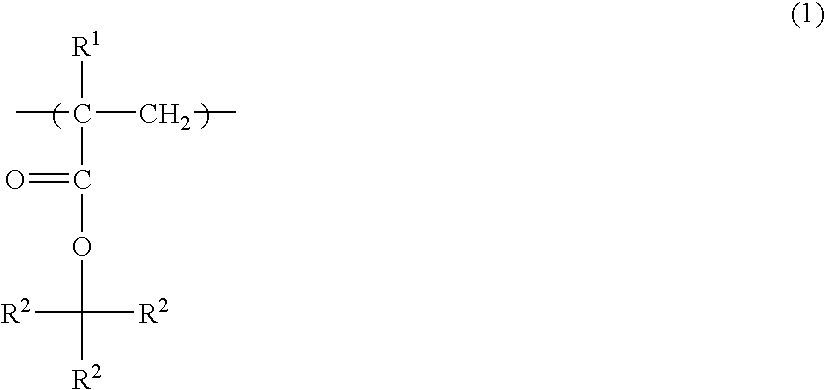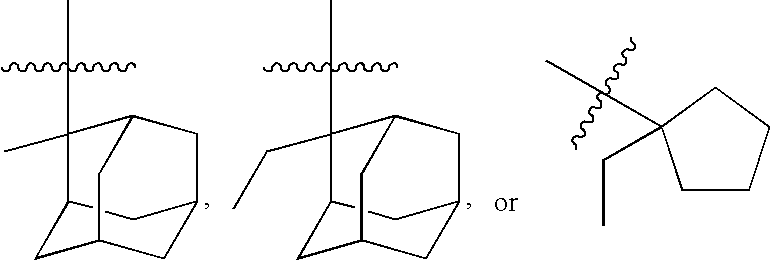Photoresist polymer compositions
a polymer composition and resist film technology, applied in the field of microfabrication, can solve the problems of increased irradiation dose in the upper portion of the resist film and decreased irradiation dose in the lower portion
- Summary
- Abstract
- Description
- Claims
- Application Information
AI Technical Summary
Benefits of technology
Problems solved by technology
Method used
Image
Examples
examples
Polymer Synthesis
Procedure for the Living Polymerization of Methacrylate and Acrylate Monomers Encompassed by the Invention
[0233] The following is a general procedure for use with a CTA. (See Table I, column C) for the polymerization of monomers to form a polymer with the desired nominal compositions (Table I, column H) and targeted to have different molecular weights (Mw) at 100% conversion. The polymerization was conducted in an organic solvent, i.e., MEK (2-butanone) (which was degassed by three freeze-pump-thaw cycles) and the initiator MAIB (V601 from WAKO, 2,2′-dimethylazobis(methylpropionate)) was used to sustain the reaction. The stock solutions were made by weighing the monomers, CTA and initiator followed by cycling with vacuum into an oxygen free box where purified MEK was added.
[0234] Similar conditions can be used for other comonomer mixtures and with other CTAs. Target molecular weight is set as a molar ratio of the monomers to the CTA. The feed time can also be var...
PUM
| Property | Measurement | Unit |
|---|---|---|
| Volume | aaaaa | aaaaa |
| Volume | aaaaa | aaaaa |
| Volume | aaaaa | aaaaa |
Abstract
Description
Claims
Application Information
 Login to View More
Login to View More - R&D
- Intellectual Property
- Life Sciences
- Materials
- Tech Scout
- Unparalleled Data Quality
- Higher Quality Content
- 60% Fewer Hallucinations
Browse by: Latest US Patents, China's latest patents, Technical Efficacy Thesaurus, Application Domain, Technology Topic, Popular Technical Reports.
© 2025 PatSnap. All rights reserved.Legal|Privacy policy|Modern Slavery Act Transparency Statement|Sitemap|About US| Contact US: help@patsnap.com



